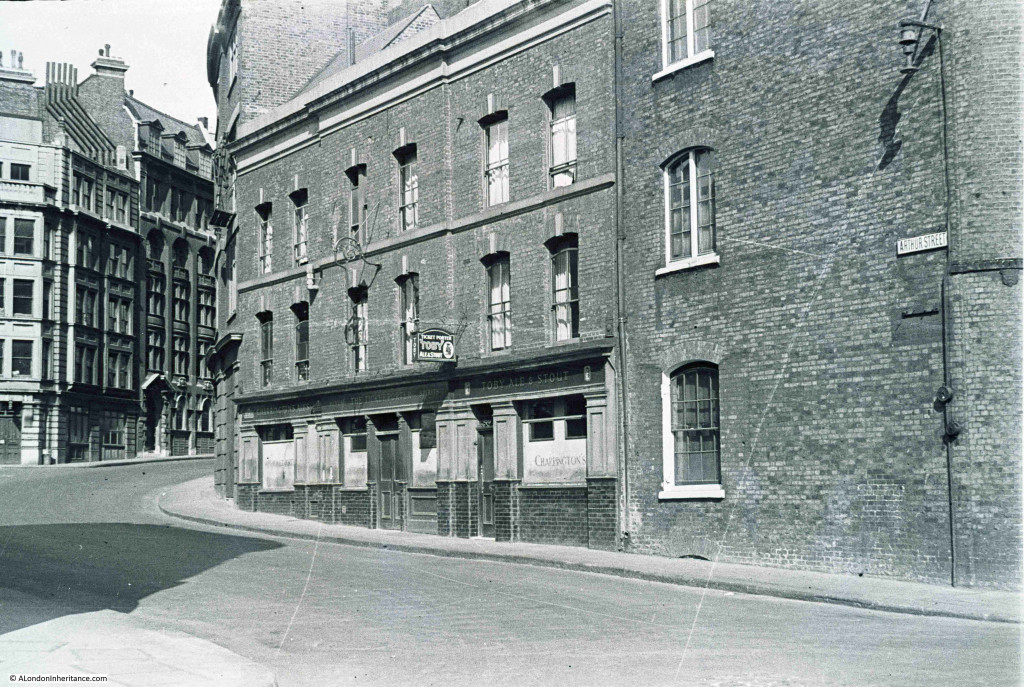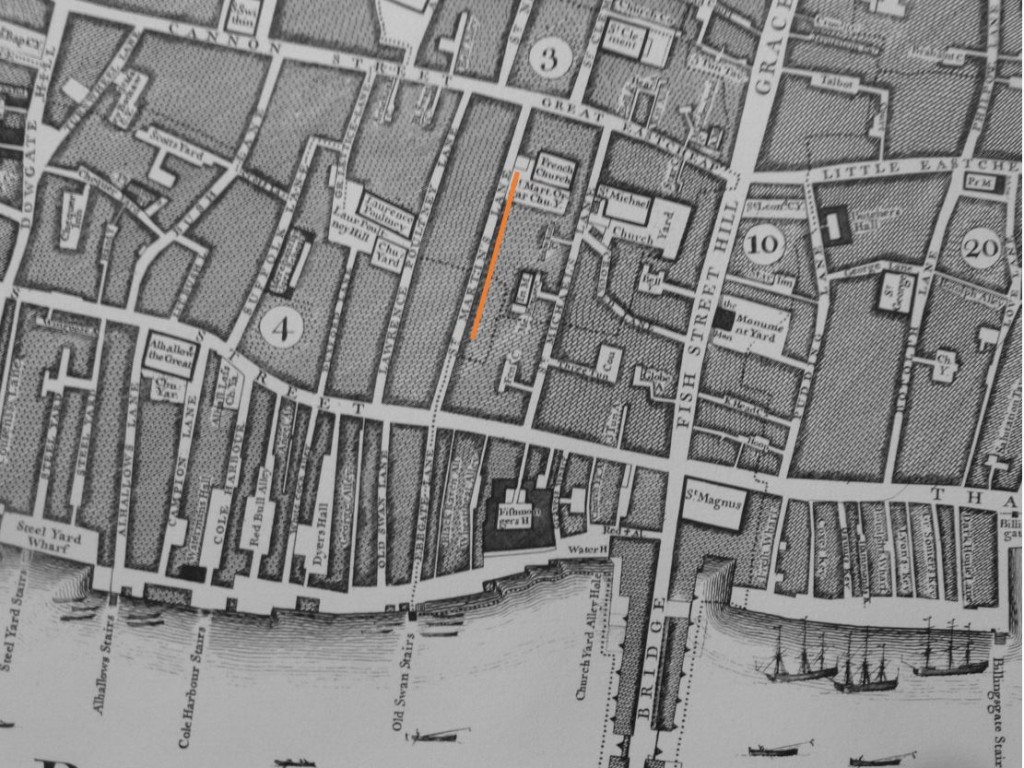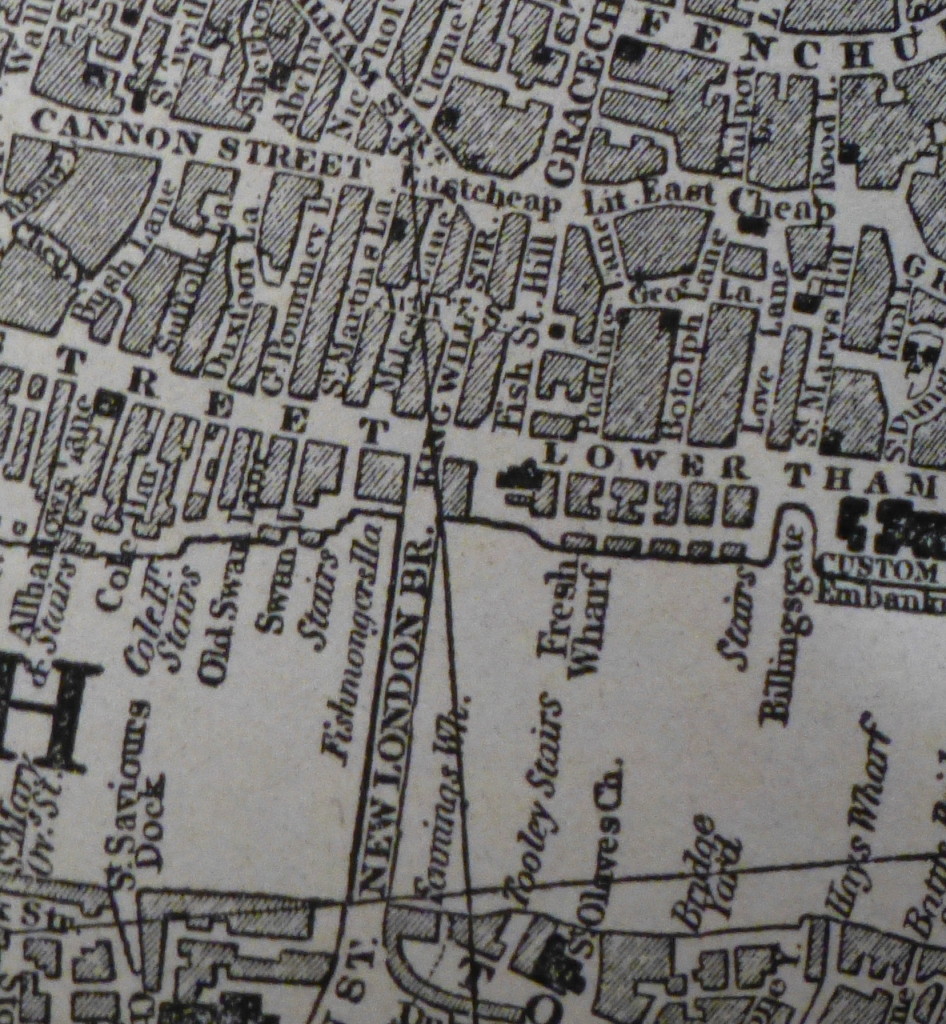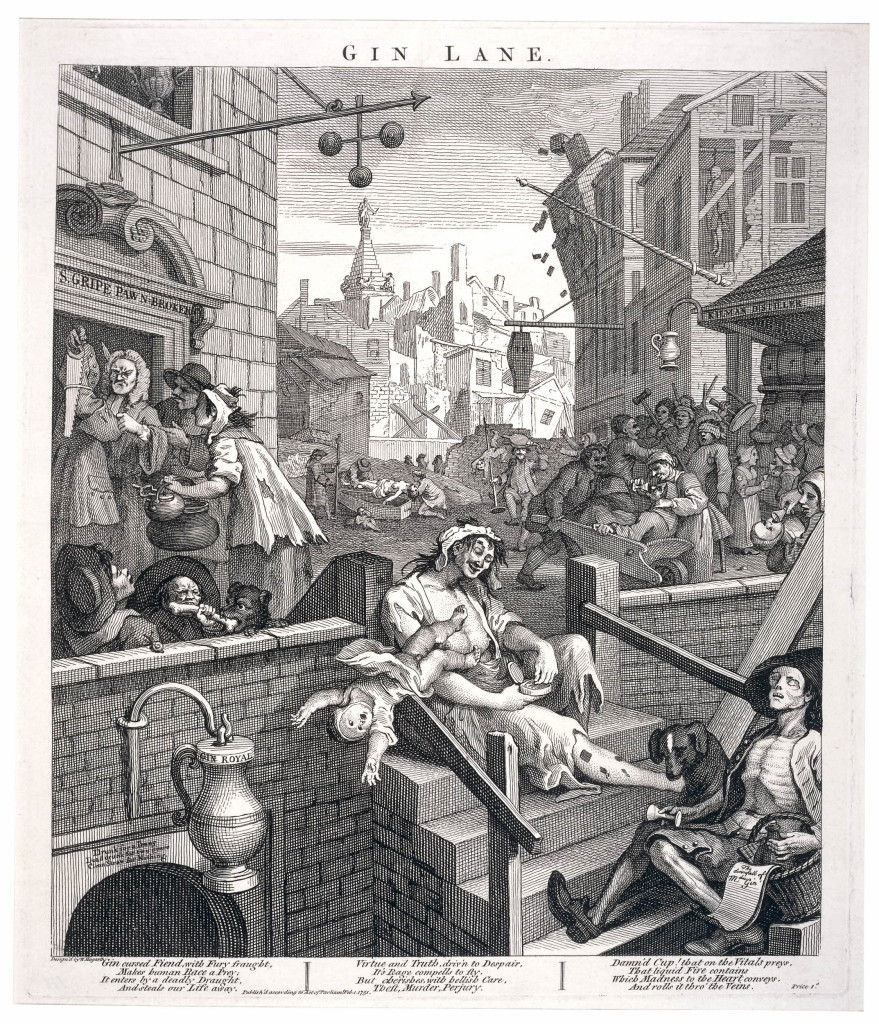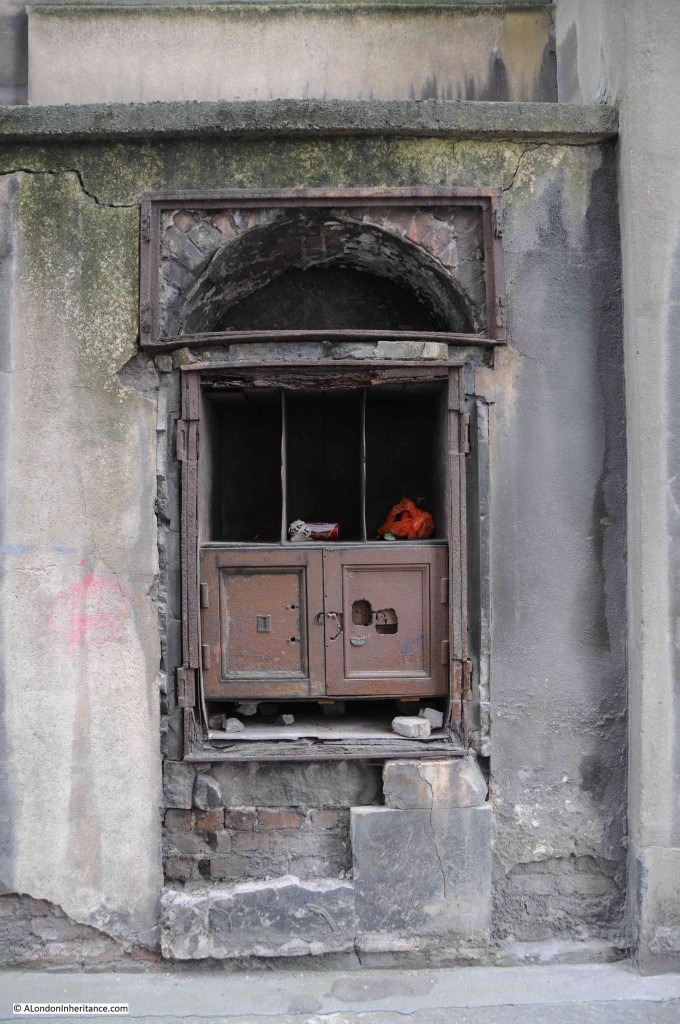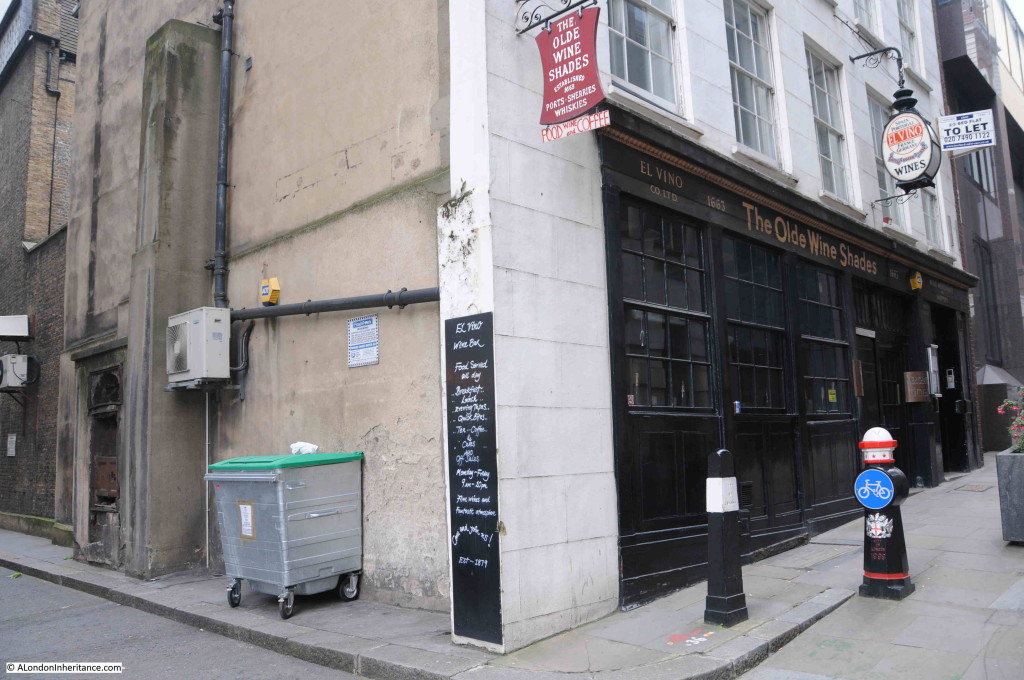For this week’s post we are in the City of London in 1948, on the corner of Arthur Street where it joins with Upper Thames Street, close to the northern approach to London Bridge. A small part of the City that did not suffer major damage during the war just a few years earlier.
Looking up Arthur Street we can see a large pub, “The Ticket Porter”:
I stood at the same place in 2015 and looked across to a very different scene:
A building site now occupies the location of the Ticket Porter. The original pub lasted until the early 1970s and the building work on the site is for probably the third building since the destruction of the pub.
To confirm that this is the correct location, if you look at the buildings on the left of the street, the second building is still the same as when my father took the original. It is the only building on Arthur Street that has survived the last 67 years.
This photo taken from the approach road to London Bridge shows the original building and the curve of Arthur Street round to the right.
Arthur Street, by London standards, is a relatively new street and I believe it was constructed to provide a route up from Upper Thames Street to London Bridge.
The location of Arthur Street is shown in the Google Map below. The curve of the street from Upper Thames Street to King William Street providing easy access to London Bridge can be clearly seen.
Prior to the move of London Bridge to its current location, Arthur Street did not exist. The following map is an extract from John Rocque’s survey of London from 1746. I have highlighted St. Martin’s Lane with an orange line. This street once ran all the way to Upper Thames Street, however today, Arthur Street now forms the lower half of what was St. Martin’s Lane (you need to zoom in on the above Google map for the street names to appear).
Today, St. Martin’s Lane has also been abbreviated to Martin Lane.
The original London Bridge was further to the east than the current bridge, John Rocque’s map shows the bridge up against the church of St. Magnus. The London Bridge that replaced the one shown in Rocque’s map was built slightly further to the west, allowing the original bridge to continue in use until the new bridge was opened in 1831.
The following extract from Cruchley’s New Plan Of London Improved to 1835 shows the new London Bridge opened a few years earlier, with Fish Street Hill, the approach road to the original London Bridge now terminating at the river. Cutting across from St. Martin’s Lane, across King William Street to Fish Street Hill is Arthur Street.
So, Arthur Street may well have been part of the changes in the area when the new London Bridge was built, originally to provide access up to King William Street and London Bridge from the surrounding roads.
At some point after 1835, Arthur Street was changed again to terminate on King William Street and down to Upper Thames Street, cutting in half St. Martin’s Lane. I suspect this change was soon after 1835 as licensing records from the 1840s give an Arthur Street address for the Ticket Porter pub.
Having established how Arthur Street may have come into existence, what about the pub?
Although there were probably more, I have only been able to find references to two pubs called The Ticket Porter. One in Moorfields and the one in Arthur Street.
The pub takes its name from those who were employed as Ticket Porters across London. The job of a Ticket Porter was to transport and carry goods across London. Ticket Porters who worked at the riverside would be responsible for the transport of goods to and from ships whilst Ticket Porters who worked in the streets would transport goods and parcels between London locations, so if a London Bookseller wanted to deliver a parcel of books to a customer, they would call on the services of a Ticket Porter.
Ticket Porters could be identified by the pewter badge that they wore, bearing the arms of the City of London.
Hogarth includes a Ticket Porter in his drawing “Beer Street”:
©Trustees of the British Museum
In the lower right of Beer Street can be seen a man drinking from a large tankard of beer. Across his chest can be seen the badge of the Ticket Porter and below him is a tied up bundle of books which he has set down whilst getting some refreshment during his journey across London.
The role of Ticket Porter also gave the name to the drink Porter, which they consumed on benches and tables set outside many London pubs as the thousands of men employed as Ticket Porters crossed London with their loads.
Hogarth’s drawing Beer Street was published to show the virtues of drinking beer rather than Gin. His Gin Lane drawing shows the drunken state to which Gin drinkers have descended whilst Beer Street shows a healthy, working population, even with the ability (as can be seen above) to work at height on the roofs of buildings. Health and safety was not the same in the 18th century.
To add to the positive images in the drawing, the text at the bottom reads:
Beer, happy Produce of our Isle,
Can sinewy Strength impart,
And wearied with fatique and Toil,
Can chear each manly Heart,
Labour and Art upheld by Thee
Succesfully advance,
We quaff Thy balmy Juice with Glee
And Water leave to France.
Genius of Health, thy grateful Taste
Rivals the Cup of Jove,
And warms each English generous Breast
With Liberty and Love
The next time I am in a London pub I will certainly be thinking of Hogarth’s words to justify the many benefits of a few pints of beer!
Compare the virtues of Beer Street and the Ticket Porter with the depravity of Gin Street:
©Trustees of the British Museum
Gin cursed Fiend with Fury fraught,
Makes human Race a Prey,
It enters by a deadly Draught,
And steals our Life away.
Virtue and Truth driven to Despair,
It’s Rage compels to fly,
But cherishes with bullish Care,
Theft, Murder, Perjury.
Damn’d Cup! that on the Vitals preys,
That liquid Fire contains,
Which Madness to the Heart conveys,
And rolls it thro’ the Veins.
Beer drinkers did not always achieve Hogarth’s high standards. The Old Bailey records include the case of a Mr James Collins who at the age of 67 was sentenced to 5 years of “penal servitude” for unlawfully using counterfeit coin in the Ticket Porter pub.
At 7:30 on the evening of the 5th February 1870 James Collins had bought two glasses of ale and each time paid with a shilling which the barmaid (Ann Hawkins, also the daughter of the licensee of the pub) had found to be “bad”. Ann had asked for the change she had given James Collins back, when he refused she called the police and gave the bad shillings to the constable who attended.
James Collins defence in court was “I was not aware I had any bad money about me; I was very drunk.” Confirmation that the shillings were “bad” was not from any official but from a Pawnbroker from Bishopsgate Street, a Mr John Althon who confirmed to the court that both shillings were “bad”.
Hogarth would not have approved.
As ever when I am looking for the locations of my father’s photos I will take a walk around the area. I found the following on the side of The Olde Wine Shades in Martin Lane and I have no idea what is it. It looks old, and is built into a brick arch behind what looks like a layer of concrete. I could not work out the function it was meant to perform.
Another view from Martin Lane showing the location to the side of The Olde Wine Shades:
Any information as to what this is would be really appreciated.
The Ticket Porter is a long lost London pub, however it provides us with a reminder of one of the many jobs that provided employment to Londoners, and how these jobs were seen within the issues of the day as captured by Hogarth.

